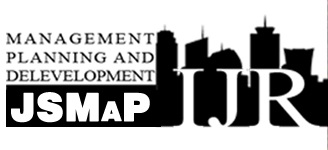Delhi is a progressive city of India and it one of the town to have a number of planning documents to guide and monitor the planning and development of the town. Delhi’s Master Plan came into force in 1962 for a perspective up to 1981, was then revised for a perspective up to 2001 again revised for 2021 which is supplemented by a number of Zonal Development Plans. The city has a City Development Plan prepared in 2006 to augment the infrastructural needs of the towns. Now, in 2010, Municipal Corporation of Delhi (MCD) initiated preparation of Local Area Plans for every wards of the municipal area of the town starting with preparation of plans for 33 wards on the MCD on a pilot basis.
There are various provisions (discussed in subsequent case studies in detail) in various planning documents like Delhi Development Act, Master Plans, City Development Plan, Guidelines for Local Area Plan preparation which talks of public participation in one form or other and the author will try to explore and review the various dimensions of the public participation like purposes, extent and intensity of the public participation.
In this chapter, the effectiveness, intensity and extent of the public participation will be reviewed and analysed for four case studies namely, objections and suggestions for Master Plan 2021, Community Consultation of the City Development Plan, Land-Use Re-Designation for a plot in old JNU campus, VasantKunj and the provisions and practices undergoing in Local Area Plan preparation of Delhi initiated, coordinated and monitored by Municipal Corporation of Delhi. Starting with the distinction between statutory and non-statutory public participation, cases of various public participation instances in different plans of Delhi will be analysed in detail for assessment of the public participation.
Objections and Suggestions in master plan is a widely used and acknowledged technique of public participation. In this technique, plan is formulated by expert committee and the draft plan is put into public domain and objections-suggestions are invited from the general public, various public agencies, institutions, organizations, eminent personality and government officials. A high powered committee reviews and hear the public objections and suggestions and then they give justification for change or not and the final decision is communicated to the concerned agency and he incorporates the recommendations of the committee and the final plan is published.
Methods of Stakeholders Participation
This widely used technique in CDPs of India is intended to obtain client feedbacks and to make development interventions more responsive to the demand. “This technique intends to serve clients better by making service providers aware of the clients’ priorities, preferences and feedbacks” (Nandy, 2007). It includes systematic listening and consultation which requires lengthier, repeated and more meaningful interactions amongst the stakeholders.
Workshop Based Methods
The aim of workshops is to create an atmosphere where stakeholders themselves can do and learn about the project and thus sustain the project. Consensus is built by a trained facilitator who has diverse knowledge and interests, through a series of activities. It encourages social learning by promoting shared responsibility, rules as well as working relationships are established by stakeholders.
Shashikant Nishant Sharma
Urban Planner
{Courtesy: Sharma, S.N. (2012), Participatory Planning in Plan Preparation: A Case of Delhi, Graduate Thesis, Department of Physical Planning, School of Planning and Architecture, New Delhi}





